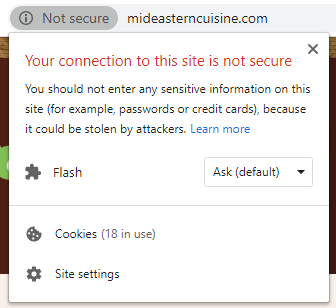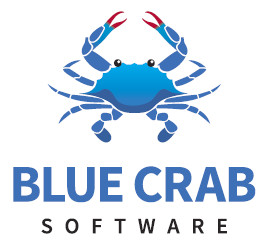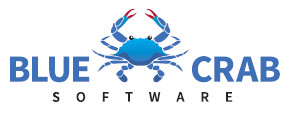Is Your Website “Unsafe”?
If someone tries to visit your website, do they get a hassle from their browser? Does Chrome warn them that your site is unsafe and they should turn back now?
For the last few years, browsers like Chrome and Firefox and Edge and Safari have shown visitors at a website whether that site is “safe”, by displaying a lock in the open (not safe) or closed (safe) position. That’s been mildly useful, but now they’re grown increasingly strident about it.
Using Chrome as an example, the first warning level is when you click on the information button and see this:

I used a local restaurant as a quick example, one that we enjoy visiting (back before the quarantine when restaurants were open!), although they’re not a client of ours. I had to look through about 20 nearby restaurant websites, however, to find one that did not have a security certificate (SSL). Surprisingly, all the others have already updated to an SSL, except for a couple very small operations that don’t have a website at all!
However, a visitor to your site can get much more alarming warnings, depending on the browser. Google Chrome, as an example, tries to identify sites that absolutely are harmful, and block them. They do this by locating malware on the site, or suspicious redirects, or other tricks. If your visitors are seeing any of the following, you should contact us to help you fix the problem.
Here’s what Google says:
—————————————–
Get warnings about dangerous & deceptive content
Phishing and malware detection is turned on by default. When it’s turned on, you might see the following messages. If you see one of these messages, we recommend that you don’t visit the site.
- The site ahead contains malware: The site you start to visit might try to install bad software, called malware, on your computer.
- Deceptive site ahead: The site you try to visit might be a phishing site.
- Suspicious site: The site you want to visit seems suspicious and may not be safe.
- The site ahead contains harmful programs: The site you start to visit might try to trick you into installing programs that cause problems when you’re browsing online.
- This page is trying to load scripts from unauthenticated sources: The site you try to visit isn’t secure.
- Did you mean [site name]? or Is this the right site?:The site you start to visit may try to confuse you, and may not be the site you meant to visit.
Important: Download with caution. Some sites try to trick you into downloading harmful software by telling you that you have a virus. Be careful not to download any harmful software.
—————————————–
As mentioned in our last newsletter, you should strongly consider purchasing an SSL certificate from us to make this problem go away. Even if your site does not collect sensitive information like credit card data, installing an SSL will turn on the locked icon and prevent visitor issues.




